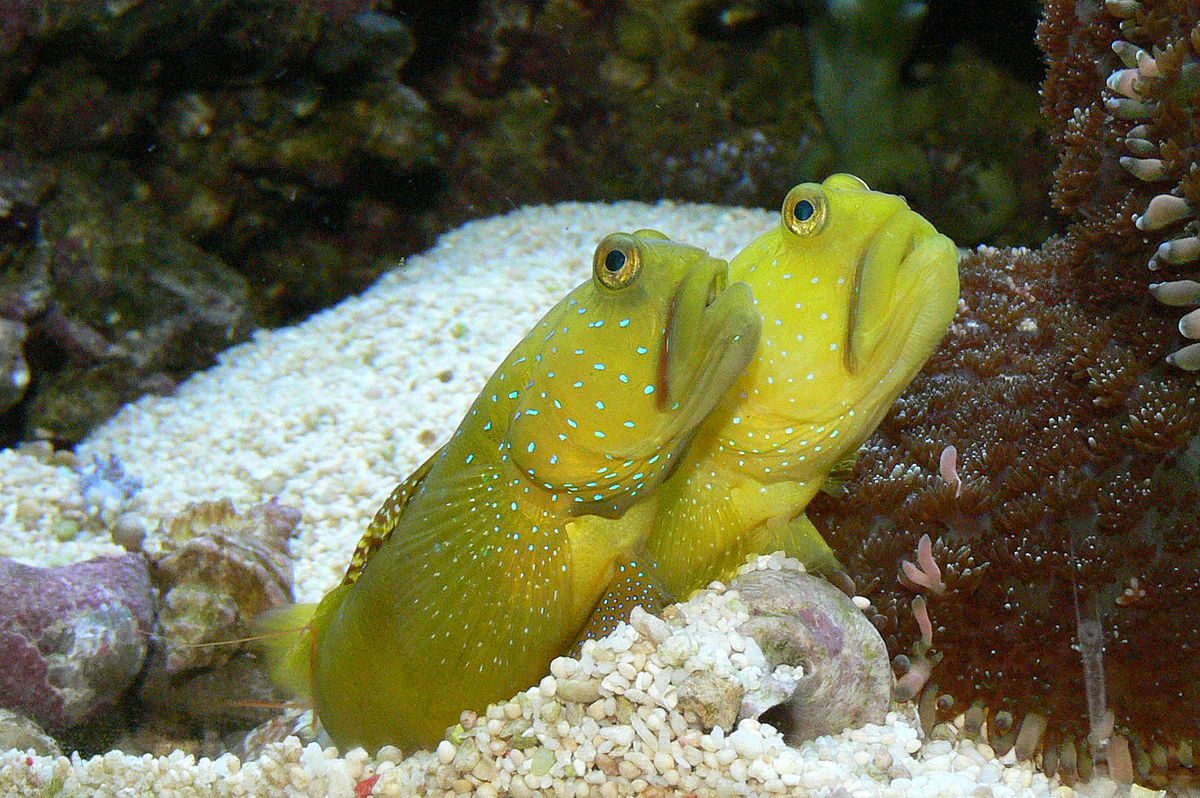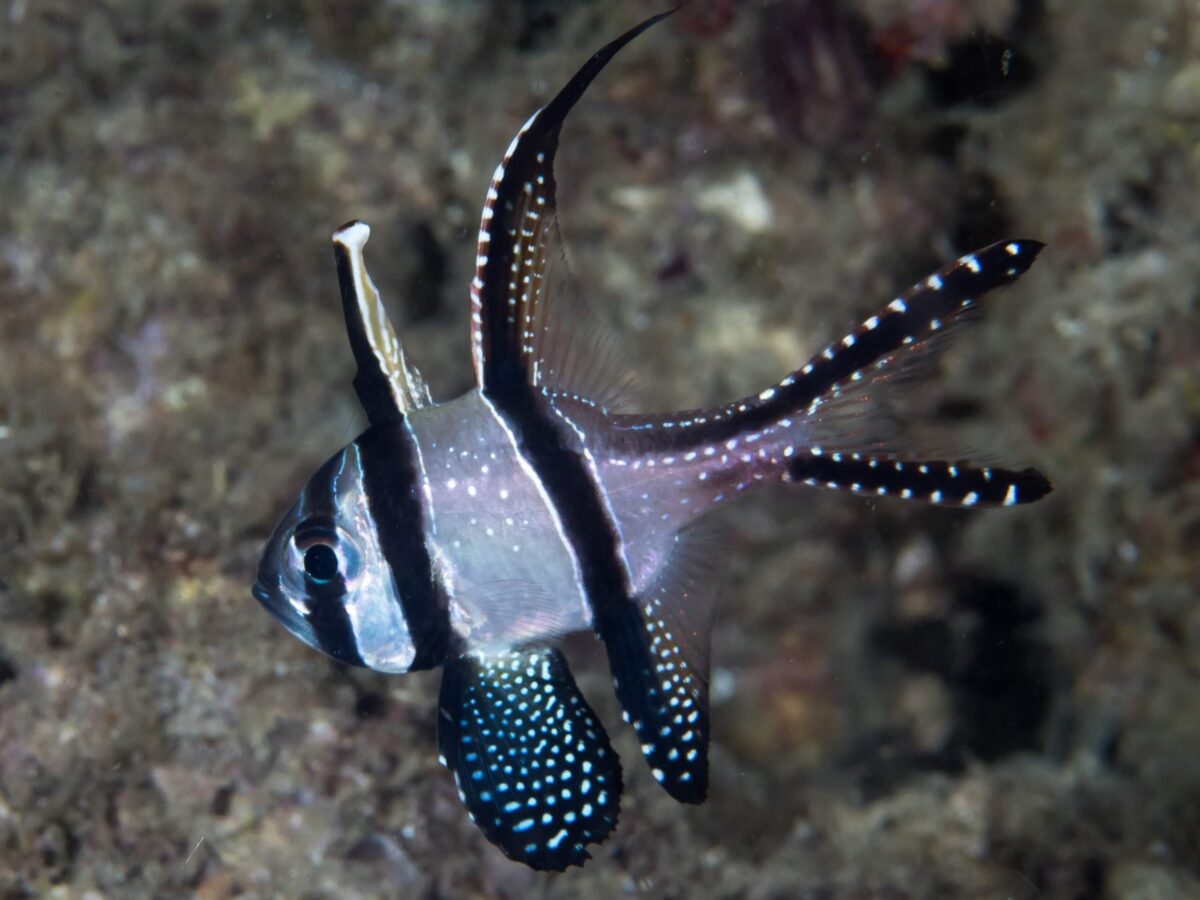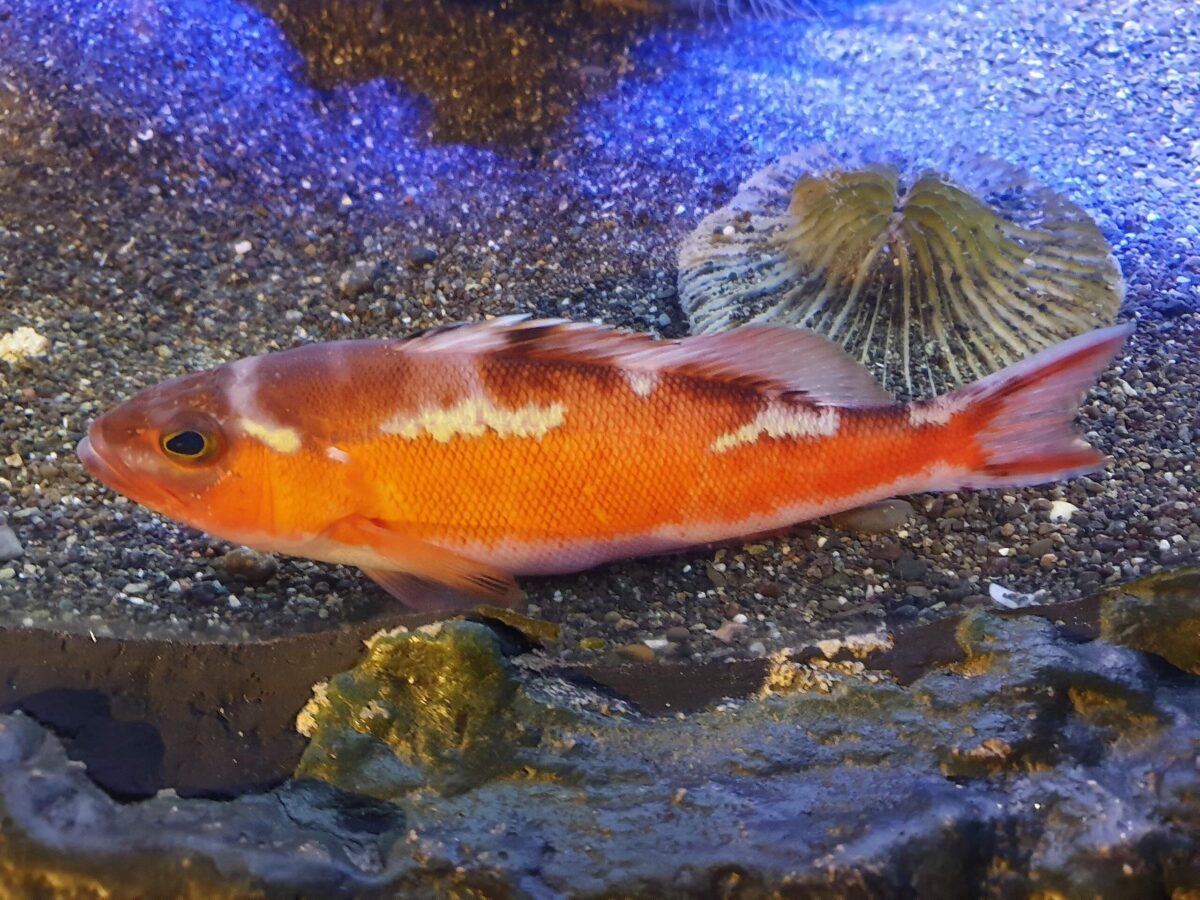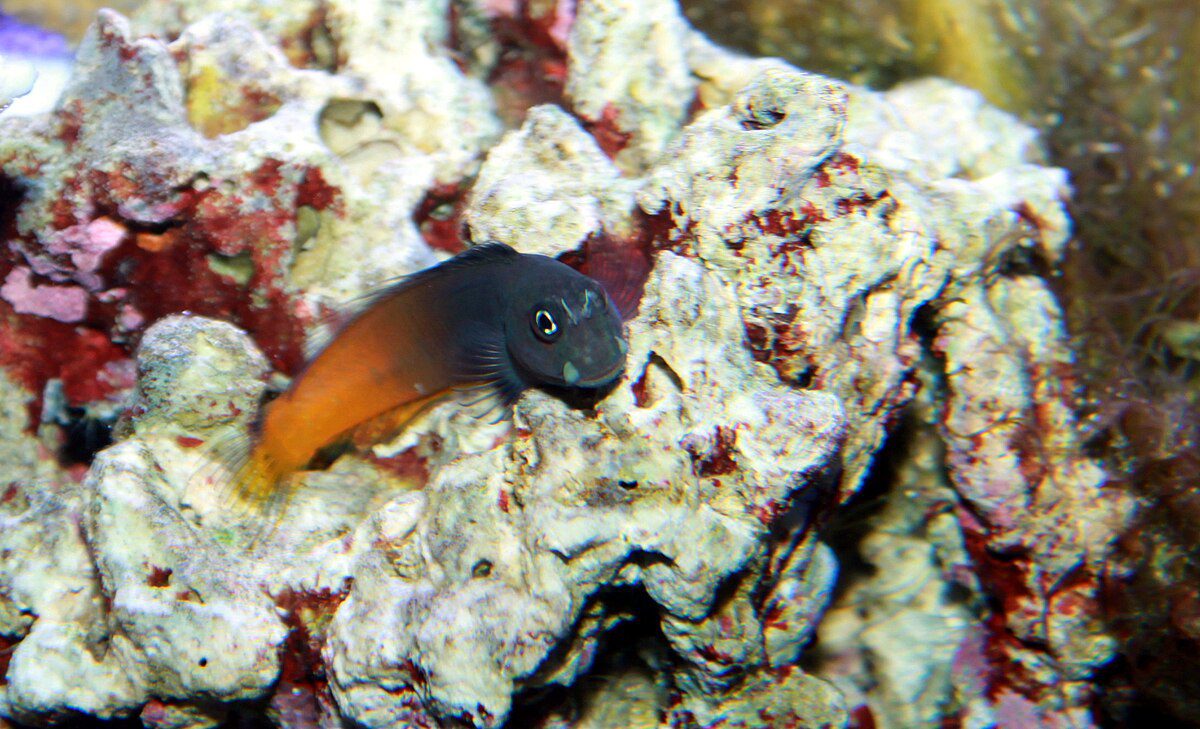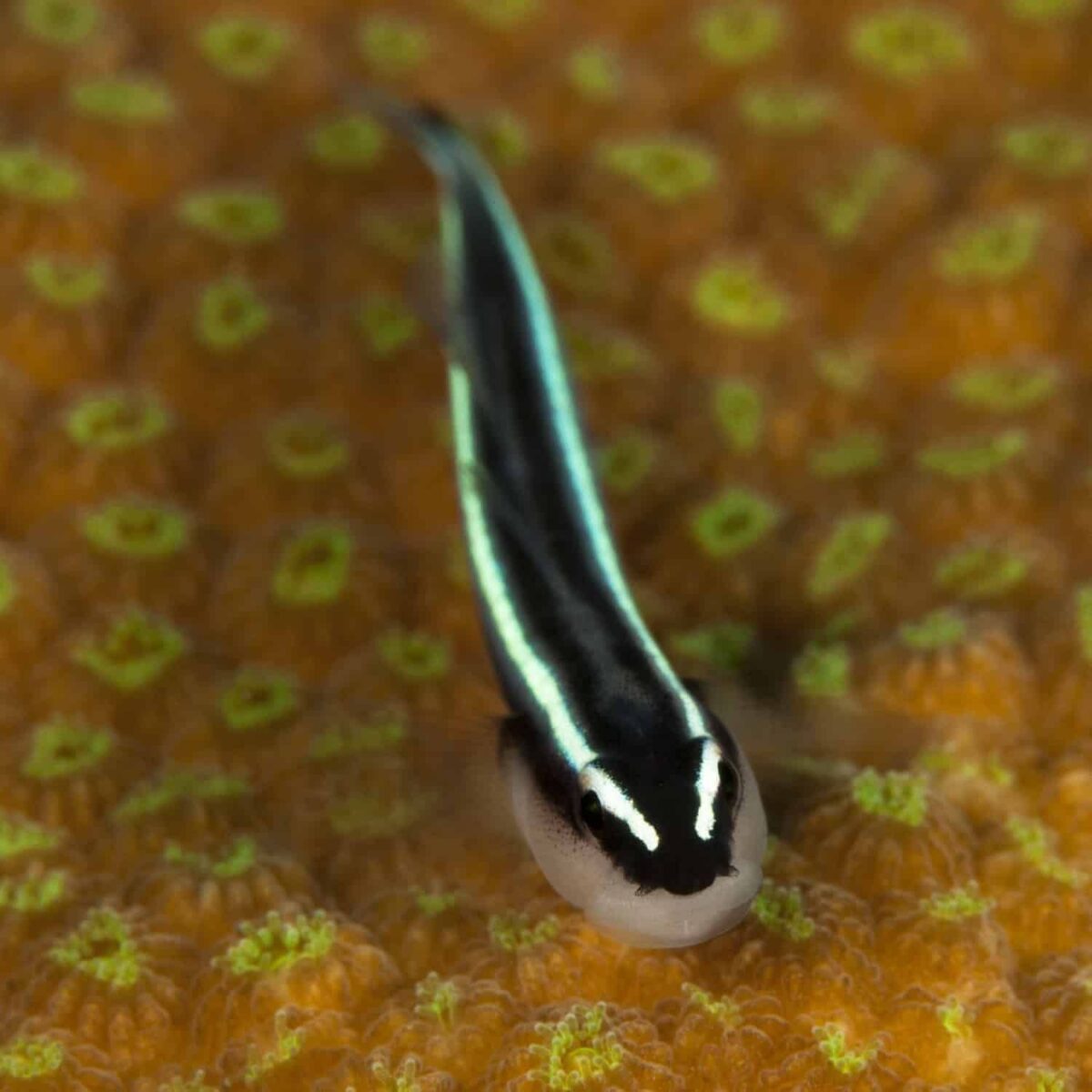G’day fish enthusiasts! In this species guide, we’re diving into the captivating world of the Yellow Watchman Goby, also known as Cryptocentrus cinctus. This beautiful saltwater fish is a favorite among marine aquarium enthusiasts, thanks to its vibrant yellow coloration and peaceful nature.
Join us as we explore the taxonomy and classification of the Yellow Watchman Goby, delve into its natural habitat and distribution, and uncover the secrets to successfully caring for this stunning species in your marine aquarium. Whether you’re a seasoned hobbyist or just starting, this guide will provide all the information you need to create a thriving habitat for your Yellow Watchman Goby.
Key Takeaways:
- The Yellow Watchman Goby, or Cryptocentrus cinctus, is a popular saltwater fish among marine aquarium enthusiasts.
- Its vibrant yellow coloration and peaceful nature make it a captivating addition to any tank.
- We’ll explore the taxonomy and classification of the Yellow Watchman Goby, as well as its natural habitat and distribution.
- Discover the ideal tank size and layout, water parameters, suitable tank mates, and more to provide the best care for your Yellow Watchman Goby.
- Learn about its dietary preferences and feeding habits to ensure a healthy and balanced diet.
Introduction – Yellow Watchman Goby
Welcome to our comprehensive guide on the Yellow Watchman Goby! In this section, we will provide an introduction to this captivating species, including its taxonomy and classification. We will also delve into its natural habitat and distribution to better understand its care requirements.
Taxonomy and Classification
The Yellow Watchman Goby, scientifically known as Cryptocentrus cinctus, belongs to the Gobiidae family. This family includes a diverse group of small, bottom-dwelling fish. Within the Gobiidae family, the Yellow Watchman Goby is classified under the genus Cryptocentrus. It is worth noting that taxonomy is fascinating and helps identify the key characteristics and traits of a particular species. Understanding the taxonomy of the Yellow Watchman Goby enables us to appreciate its uniqueness and better care for it.
| Attributes | Descriptions |
|---|---|
| Scientific name: | Cryptocentrus cinctus |
| Common Names: | Yellow Watchman Goby, Yellow Shrimp Goby |
| Origin: | Western Pacific |
| Family: | Gobiidae |
| Social: | Peaceful, suitable for community tanks |
| Domain in the tank: | Bottom-dweller |
| Minimum tank size: | 20 gallons (75 liters) |
| Diet: | Carnivore |
| Breeding: | Possible in captivity, forms monogamous pairs |
| Care level: | Easy |
| pH Range: | 8.1 – 8.4 |
| Water Hardness: | 8 – 12 dKH |
| Temperature in F/C: | 72-78°F (22-26°C) |
| Common Diseases: | Marine Ich, Velvet |
| Life Span: | 5+ years |
| Size: | Up to 4 inches (10 cm) |
| Best Tank Mates: | Peaceful reef fish, pistol shrimp |
Natural Habitat and Distribution
The Yellow Watchman Goby is primarily found in the Indo-Pacific region. Its natural habitat includes coral reefs, rocky crevices, and rubble areas. These fish prefer shallow, sandy-bottomed environments. They often form symbiotic relationships with burrowing invertebrates like pistol shrimps, creating a mutually beneficial partnership. This species has a wide distribution, ranging from the Red Sea to the western Pacific Ocean, including the Great Barrier Reef. Understanding their natural habitat and distribution is crucial for recreating a suitable environment in captivity.
Physical Description and Characteristics
Regarding the physical description and characteristics of the Yellow Watchman Goby, several notable features set this species apart. Let’s dive into the details:
Colors and Markings
The Yellow Watchman Goby showcases a striking yellow colouration, which is where it gets its common name. This vibrant hue adds a beautiful splash of colour to any marine aquarium. In addition to its yellow body, this species often displays unique markings, such as intricate patterns or spots, which can vary from individual to individual. These distinct colourations and markings make the Yellow Watchman Goby a visually appealing and sought-after choice for fish enthusiasts.
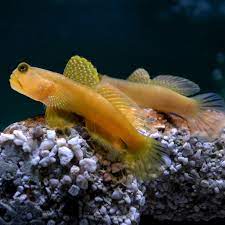
Gender Differences
While it may be difficult to distinguish between male and female Yellow Watchman Gobies based on physical characteristics alone, some subtle differences can help identify their gender. Male Yellow Watchman Gobies are typically more petite and slender than females. Males may also exhibit more intense colouration and have elongated dorsal fins. However, it is essential to note that these differences can vary among individuals, making it challenging to determine gender ultimately.
Varieties
There are no distinct varieties of the Yellow Watchman Goby currently recognized. However, within the species, there may be slight variations in colouration and markings, providing unique characteristics to individual fish. These natural variations contribute to the overall beauty and diversity of this species.
Grades
There is no standardized grading system in place when grading the Yellow Watchman Goby. However, hobbyists and enthusiasts often evaluate individual fish based on their physical appearance, colour intensity, and overall health. This subjective grading allows for personal preference and individual assessment of the fish’s quality.
Behaviour and Temperament
The Yellow Watchman Goby is a peaceful and docile species, making it an excellent addition to most saltwater aquariums. It spends much of its time perched on rock formations or in burrows it creates in the substrate. This behavior is fascinating to observe and serves as a natural defense mechanism for the goby, allowing it to hide from potential predators. Despite its relatively small size, the Yellow Watchman Goby is known for its active nature and can be seen exploring its surroundings and intricately navigating through the aquarium.
Overall, the Yellow Watchman Goby’s physical characteristics, vibrant colours, and peaceful temperament make it a popular choice for beginner and experienced marine aquarium enthusiasts.
Aquarium Requirements
Ideal Tank Size and Layout
The Yellow Watchman Goby, or Cryptocentrus cinctus, requires a suitable aquarium environment to thrive. An ideal tank size for this species is a minimum of 20 gallons, providing enough space for the goby to swim and explore. To mimic their natural habitat, it is essential to incorporate suitable hiding places, such as caves or rock formations. This will help create a secure environment for the goby to feel comfortable and reduce stress.
Water Parameters
Maintaining specific water parameters is crucial to ensure the optimal health and well-being of the Yellow Watchman Goby. The recommended temperature range for this species is between 74°F and 82°F (23°C and 28°C). Maintaining a salinity level of 1.020 to 1.025 and a pH level of 8.1 to 8.4 is essential. It is important to regularly test and monitor these parameters to ensure they remain within the appropriate range.
Suitable Tank Mates and Potential Conflicts
When selecting tank mates for the Yellow Watchman Goby, it is best to choose peaceful species that are compatible with its temperament and size. Good tank mates include other small, non-aggressive fish such as clownfish, blennies, and gobies. Care should be taken to avoid pairing the goby with aggressive or territorial species that may harass or harm it.
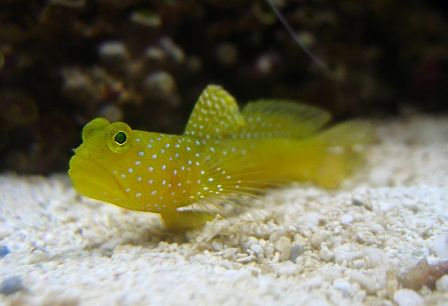
Compatibility with Live Plants and Invertebrates
The Yellow Watchman Goby can coexist with live plants in the aquarium. However, it is crucial to consider that the goby may dig in the substrate and rearrange plants, potentially uprooting them. If live plants are a priority, choosing hardy species that can tolerate some disturbance is advisable. In terms of invertebrates, caution should be exercised when housing the goby with delicate or small invertebrates, as it may view them as food or disrupt their habitat.
Yellow Watchman Goby (Cryptocentrus cinctus) – Care
Caring for the Yellow Watchman Goby ensures its well-being and longevity. Proper care involves various aspects, including tank maintenance, feeding, and disease prevention. Following these guidelines can create a healthy and thriving environment for your Yellow Watchman Goby.
Diseases
Like any other fish, the Yellow Watchman Goby is susceptible to certain diseases. Understanding common diseases affecting this species is crucial for prevention and timely treatment. Here are some common diseases that Yellow Watchman Gobies may encounter:
- Dropsy: A condition characterized by bloating and raised scales. It is often caused by poor water quality or bacterial infections.
- Ich (White Spot Disease): A parasitic infection that causes white, salt-like spots on the body and fins of the fish. It is highly contagious and can be fatal if not treated promptly.
- Fin Rot: A bacterial infection that leads to the deterioration of fins, resulting in frayed or disintegrating fin tissue. Poor water quality and stress are common causes of fin rot.
- Velvet Disease: A parasitic infection characterized by a fine, velvet-like coating on the fish’s body. It can cause rapid weight loss, lethargy, and loss of appetite.
To prevent these diseases and maintain the health of your Yellow Watchman Goby, it is essential to implement proper care practices. Here are a few tips:
- Maintain excellent water quality by regularly testing and monitoring the tank parameters. Yellow Watchman Gobies prefer stable and clean water conditions.
- Provide a well-balanced diet of high-quality flake or pellet food supplemented with frozen or live foods. A nutritious diet enhances the immune system and helps prevent diseases.
- Quarantine any new fish or invertebrates before introducing them to the main tank to prevent the spread of diseases.
- Perform regular tank maintenance, including water changes, filter cleaning, and substrate vacuuming, to eliminate excess waste and maintain optimal water conditions.
- Observe your Yellow Watchman Goby regularly for any signs of illness, such as changes in behaviour, appetite, or physical appearance. Early detection is crucial for prompt treatment.
By implementing these care practices and staying vigilant, you can significantly reduce the risk of diseases and provide a healthy environment for your Yellow Watchman Goby.
Diet and Feeding of Yellow Watchman Goby
In order to maintain the health and well-being of your Yellow Watchman Goby, it is crucial to understand its dietary preferences and provide suitable foods with the proper feeding schedule. Ensuring a balanced and nutritious diet can help your Yellow Watchman Goby thrive in your aquarium.
Dietary Preferences
The Yellow Watchman Goby is a carnivorous species that mainly feeds on small invertebrates and tiny crustaceans in the wild. In captivity, it is essential to replicate its natural diet as closely as possible to promote optimal health and growth. These gobies have a particular affinity for consuming live prey, so offering live or frozen foods is highly recommended.
Recommended Foods and Feeding Schedule
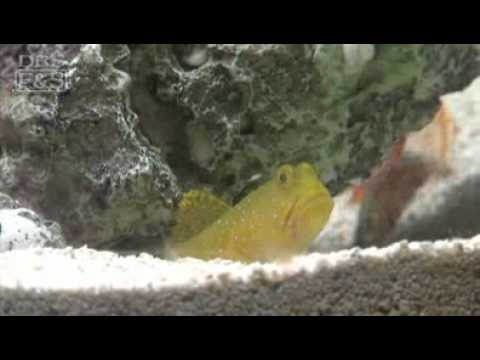
When it comes to feeding your Yellow Watchman Goby, several options exist. Suitable foods include live or frozen brine, mysis shrimp, and small pieces of chopped seafood such as shrimp or fish. These can be readily available at fish stores or online retailers.
Feeding your Yellow Watchman Goby small amounts of food multiple times a day is essential since they have small stomachs, and frequent feeding mimics their natural feeding habits. A feeding schedule of two to three small daily feedings is ideal. This will ensure that your Yellow Watchman Goby receives enough nutrition without overfeeding or creating unnecessary waste in your aquarium.
Tips on Ensuring a Balanced and Nutritious Diet
To ensure a balanced and nutritious diet for your Yellow Watchman Goby, consider the following tips:
- Offer a variety of suitable foods to provide a diverse range of nutrients.
- Rotate between live and frozen foods to mimic their natural feeding habits.
- Monitor your goby’s feeding habits and adjust the amount of food accordingly to prevent overfeeding.
- Remove any uneaten food from the aquarium to maintain good water quality.
By following these guidelines, you can provide your Yellow Watchman Goby with a diet that meets its dietary preferences and nutritional needs, promoting overall health and vitality.
Breeding and Reproduction
Breeding the Yellow Watchman Goby can be a rewarding experience. In this section, we will explore the process of breeding and reproduction in this species. We will discuss how to determine the sex of the Yellow Watchman Goby, as well as its breeding behavior and preferred conditions. Additionally, we will provide insights into the care of eggs and fry, highlighting any challenges that may arise when breeding this species in captivity.
Sexing
To successfully breed Yellow Watchman Gobies, it is crucial to be able to distinguish between males and females. Males typically have more extended and more elongated dorsal fins compared to females. Additionally, females may exhibit a rounder belly when ready to spawn.
Breeding Behavior and Conditions
The Yellow Watchman Goby exhibits interesting breeding behaviour in captivity. The male constructs and maintains a burrow as the nesting site. The male will entice the female into the burrow, where she will lay her eggs. Afterwards, the male guards the eggs until they hatch.
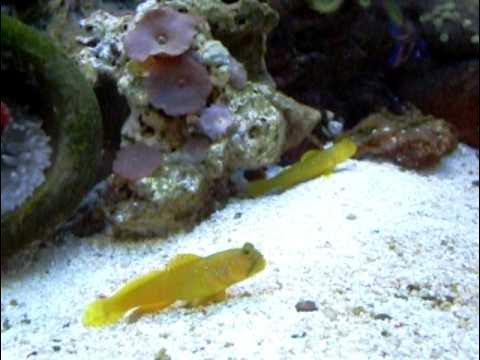
Providing the Yellow Watchman Gobies with suitable conditions is crucial to encourage breeding. A well-established and mature aquarium with stable water parameters is essential. The temperature should be maintained between 75-79°F (24-26°C), with a pH range of 8.1-8.4 and a salinity level of 1.020-1.025. Additionally, ensure ample hiding spots and caves for the gobies to create their nests.
Care of Eggs and Fry
Monitoring the breeding pair closely is essential once the female has laid her eggs. The male Yellow Watchman Goby will diligently guard the eggs, fanning them with his fins to ensure proper oxygenation. Maintaining optimal water quality during this time is essential to prevent any harm to the eggs or fry.
After hatching, the fry will remain in the burrow with the male for a short period. At this stage, providing adequate food for the growing fry is crucial. Offer them small live foods such as copepods, brine shrimp nauplii, or finely crushed flakes. Gradually introduce commercially available fry food as they grow larger.
Challenges in Breeding in Captivity
While breeding Yellow Watchman Gobies can be a rewarding experience, some challenges may arise. Sometimes, the pair may fail to breed, or the male may become aggressive towards the female. Inadequate water quality or suboptimal tank conditions can also hinder successful breeding. It is essential to closely monitor and address any issues that may arise to maximize the chances of successful breeding.
Others in the same family
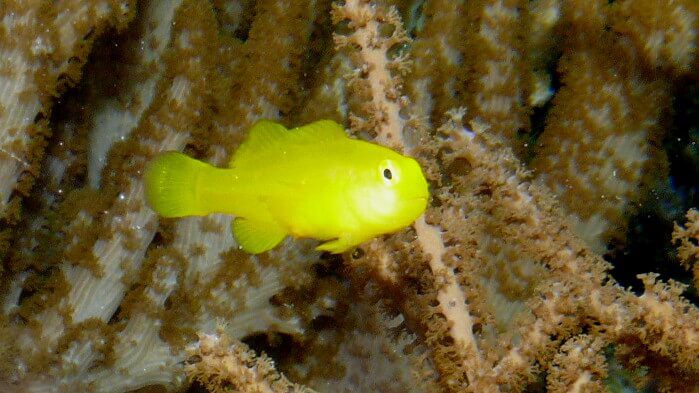 | Bring a splash of vibrant colour and personality to your reef tank by adding a Yellow Clown Goby today—where tiny meets mighty in your aquarium! |
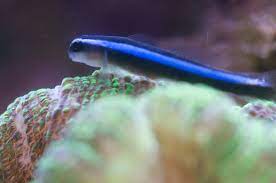 | Dive into the vibrant world of your aquarium by adding a Neon Goby today – where every day is a splash of colour and curiosity! |
Summary
In conclusion, the Yellow Watchman Goby, scientifically known as Cryptocentrus cinctus, is a fascinating and peaceful saltwater fish species that marine aquarium enthusiasts highly sought after. This comprehensive guide has explored various aspects of the Yellow Watchman Goby, including its taxonomy, natural habitat, and physical characteristics.
We have discussed the vibrant colours and markings that make this species visually appealing and the subtle gender differences. Furthermore, we have examined the different varieties and grades of the Yellow Watchman Goby and provided insights into its behaviour and temperament.
When caring for the Yellow Watchman Goby, we have delved into its specific aquarium requirements, such as tank size, layout, and water parameters. We have also explored suitable tank mates, potential conflicts, and the compatibility of this species with live plants and invertebrates.
Regarding diet and feeding, we have highlighted the dietary preferences of the Yellow Watchman Goby and recommended suitable foods and feeding schedules. We have also provided valuable tips on ensuring this species a balanced and nutritious diet.
Lastly, we have touched upon breeding and reproduction, discussing topics such as sexing, breeding behaviour and conditions, care of eggs and fry, and challenges in breeding in captivity. This information will be invaluable to those interested in successfully breeding the Yellow Watchman Goby.
By summarizing these key points, we aim to provide readers with a comprehensive overview of this captivating species. Whether you are a beginner or an experienced aquarist, this guide will serve as a valuable reference in caring for and enjoying the beauty of the Yellow Watchman Goby.

